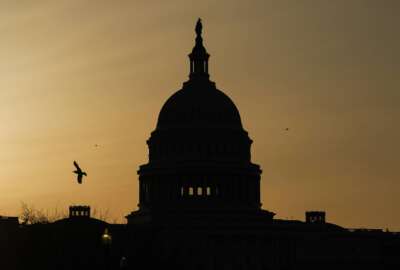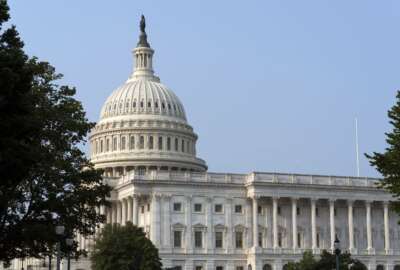Checking in on the year-end checklist, and it’s not pretty
No, there hasn't been much progress on several pressing issues, including a need to secure full-year agency funding and avert (another) government shutdown, a deal...
Time flies after Labor Day.
The last time I ran through the congressional to-do list in mid-September, it included familiar items such as avoiding a government shutdown and passing the annual defense policy bill.
Unfortunately, not much has changed since then. Today, the to-do list looks a little something like this:
- Avoid another government shutdown
- Raise (or suspend) the debt ceiling (again)
- Pass the $1.3 trillion infrastructure bill
- Pass a $3.5 trillion reconciliation bill
- Pass the annual defense authorization bill
- (Eventually) secure full-year 2022 funding
For the record, it’s almost exactly the same as it was last month. Congress hasn’t made much progress on any of these priorities, instead choosing to punt on government funding and the debt ceiling until December.
National media outlets have been covering the ongoing debates over the reconciliation bill, which has subsequently delayed full passage of that $1.3 trillion infrastructure bill that cleared the Senate this summer. Roads, bridges and whatever policy proposals make it into the “Build Back Better” plan will get much of the spotlight, but feds will inevitably see new programs or changes that could impact their lives on the job.
The Senate-passed infrastructure bill already has a few.
At this second, the House is theoretically supposed to “aim to consider” the infrastructure and reconciliation bills later this week. We’ll see.
In the meantime, federal employees got pretty close to government shutdown territory last month, with Congress passing a temporary, stop-gap funding measure with hours to spare until the deadline.
The continuing resolution bought Congress approximately nine weeks to work on the government funding problem.
So far there hasn’t been much progress, unless you consider what Senate Democrats released last week. Months after House Democrats unveiled draft spending bills and passed nine of them in their own chamber, senators revealed their own priorities for the current fiscal year. Yes, that’s for the year that’s technically already started.
Senate Democrats want to see spending for civilian agencies go up 13%, almost consistent with the recommendations from the Biden administration and their counterparts in the House.
They’re also eying a 5% funding boost for defense programs in 2022, higher than what the administration envisioned.
Notably for federal employees, Senate Democrats also endorsed the president’s planned 2.7% pay raise for civilian workers next year. Neither the House nor Senate appears interested in legislating their own federal pay raise for civilian employees next year, making Biden’s planned 2.7% increase all the more likely.
If it sounds like they’re making progress, there’s a catch.
Congress and the White House have yet to agree on just how much they want to spend in 2022 in the first place, and they haven’t settled on how much should go toward defense and civilian programs.
Those are usually the kinds of decisions Congress and the White House make first, before choosing how much to spend on individual agencies programs.
Instead, Congress has taken a bit of a backward approach to budgeting this year. And House and Senate appropriators need an agreement on topline spending figures before they can begin to conference over the differences in their respective drafts — and then eventually pass final appropriations bills into law.
Can they do it by Dec. 3? Again, we’ll see. And if not, there’s always the possibility of another continuing resolution to buy yet more time.
I’ll throw one more wrench into the mix, and that’s the ongoing drama over the debt ceiling. This is entirely unsettled territory, one that’s perhaps on the shakiest ground.
Congress managed to temporarily lift the debt ceiling a few weeks ago but raised it through Dec. 3.
Yes, that is the same date the government could run out of funding. Tying the two deadlines together could be extraordinarily tricky, especially considering neither Democrats nor Republicans seem to have budged on their respective positions.
Congress will inevitably make some progress on all of these items, both out of political and logistical necessity, in the coming weeks.
But it’ll be a wild November.
Nearly Useless Factoid
By Alazar Moges
The name jack-o’-lantern, comes from an Irish folktale about a man named Stingy Jack. According to the story, Stingy Jack invited the Devil to have a drink with him. True to his name, Stingy Jack didn’t want to pay for his drink, so he convinced the Devil to turn himself into a coin that Jack could use to buy their drinks.
Source: History Channel
Copyright © 2025 Federal News Network. All rights reserved. This website is not intended for users located within the European Economic Area.
Nicole Ogrysko is a reporter for Federal News Network focusing on the federal workforce and federal pay and benefits.
Follow @nogryskoWFED






